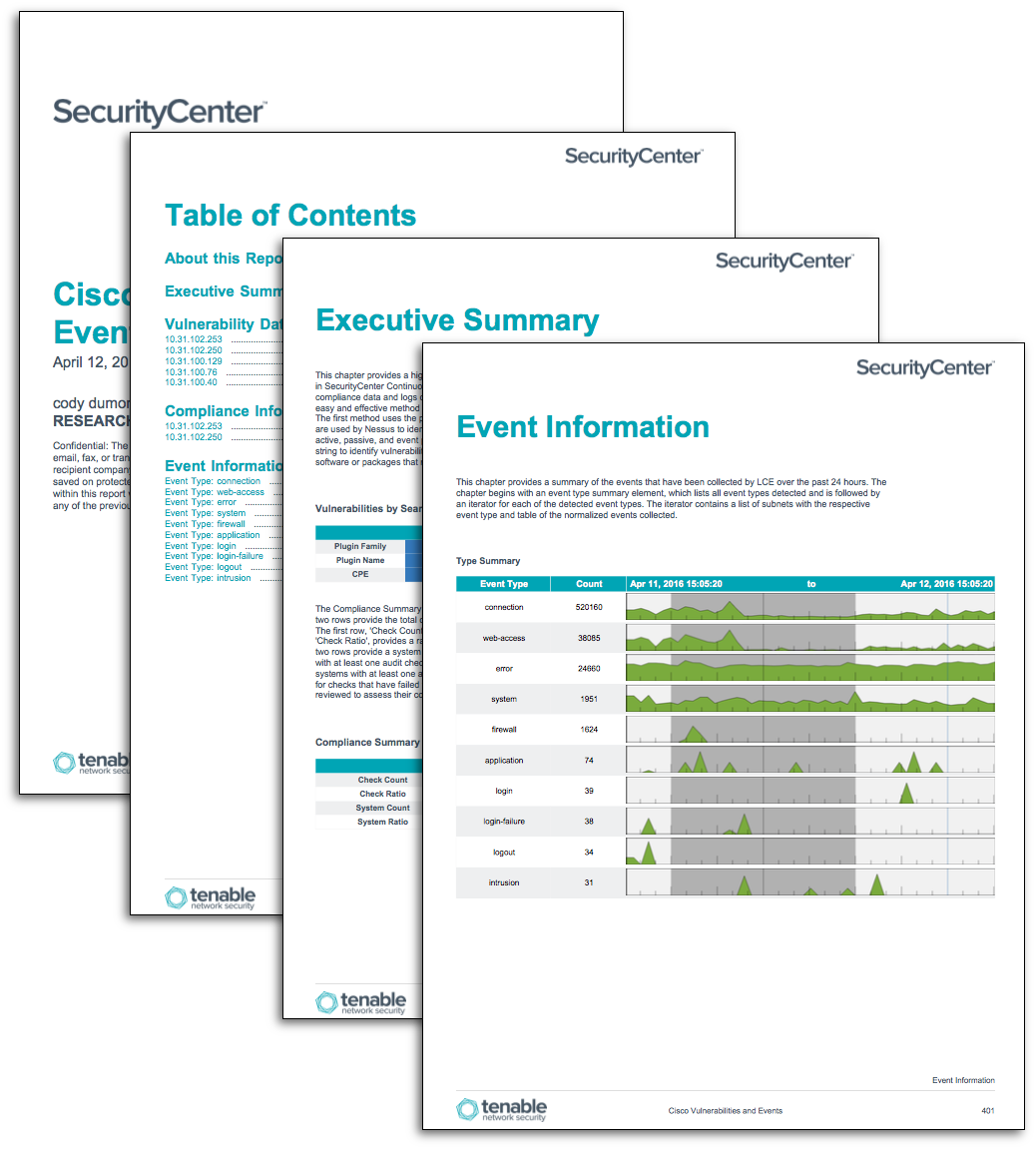by Cody Dumont
April 22, 2016

Overlooking threat vectors in an organization can be disastrous, and network infrastructure such as routers and switches often escape the purview of vulnerability scans. Scanning network infrastructure devices is important; however, most of the useful information collected from these devices is gained through log collection. This report provides a centralized view of vulnerability and log data collected from Cisco devices such as routers, switches, and firewalls.
Performing vulnerability scans on Cisco devices is perfectly safe. However, there is a stigma surrounding vulnerability scanning routers, switches, and firewalls. Due to this stigma, Cisco devices are often limited to being scanned on monthly basis and in very limited time windows. Creating targeted scan policies and only scanning the necessary devices can help reduce the stigma and allow the network team to become more comfortable with the vulnerability scanning of Cisco devices.
In addition to vulnerability scanning, SecurityCenter comes with many audit files for Cisco devices. The audit files are automatically updated as part of the SecurityCenter plugin feed, and are easily downloaded using the templates provided in SecurityCenter GUI. The audit files support checks against DISA STIGs, CIS Configuration Guides, and other documented best practices. SecurityCenter also supports editing audit files using a new GUI interface where key values such as NTP Server, Logging Server, and other settings can be easily modified. Once downloaded, audit files can be manually edited and re-imported into SecurityCenter. By adding audit files to vulnerability scans, the network team can obtain information on potential configuration vulnerabilities found in the Cisco device configurations.
During the times between vulnerability and audit scans, the Passive Vulnerability Scanner (PVS) can detect over 100 Cisco vulnerabilities, such as ACL bypass, shell detection, SNMP configuration, VPN detections, and TFTP usage. In addition to PVS, the Log Correlation Engine (LCE) can also be used to collect logs and NetFlow data from Cisco devices. By collecting logs, LCE can identify Cisco devices, software versions, and possible vulnerabilities. LCE also normalizes over 1,000 syslog events for easier analysis and threat detection.
When incorporating SecurityCenter Continuous View (CV) into the daily operations of both the network team and security team, the overall improvement of security will increase. Using vulnerability and audit scans, along with passive and log collection, the organization will be able to gain a clear view of the risks and security concerns associated with their Cisco devices.
The report is available in the SecurityCenter Feed, a comprehensive collection of dashboards, reports, Assurance Report Cards, and assets. The report can be easily located in the SecurityCenter Feed under the category Threat Detection & Vulnerability Assessments. The report requirements are:
- SecurityCenter 5.1.0
- Nessus 6.5.6
- LCE 4.8.0
SecurityCenter Continuous View (CV) is the standard by which other solutions should measure themselves. SecurityCenter CV provides continuous network monitoring to identify vulnerabilities, reduce risk, and ensure compliance. Continuous monitoring with SecurityCenter CV allows for the most comprehensive and integrated view of network health. SecurityCenter CV supports more technologies than any other vendor including operating systems, network devices, hypervisors, databases, tablets, phones, web servers, and critical infrastructure. The tight integration of vulnerability analysis, compliance review, and log correlation can help to make any Cisco network infrastructure more secure and stable.
Chapters
Executive Summary: This chapter provides a high level overview of data collected from Cisco devices using all available sources in SecurityCenter Continuous View (CV). The data is from active and passive detection, followed by compliance data and logs collected from LCE.
Vulnerability Data: This chapter provides a detailed list of all the vulnerabilities that have “Cisco” in the plugin name. The plugin name filter provides the most results of all three search methods. The chapter begins with a three-month trend analysis of vulnerabilities, followed by a summary by subnet. The final element is an iterator for all the vulnerabilities detected. Within the iterator is a severity summary chart, table of the detected vulnerabilities, and detailed description of each vulnerability detected.
Compliance Information: This chapter provides the details of compliance checks performed against Cisco devices. The chapter begins with a three-month trend analysis of compliance checks, followed by a summary by subnet. The final element is an iterator for all the compliance checks reported. Within the iterator is a severity summary chart, table of the detected audit checks, and detailed description of each audit check performed.
Event Information: This chapter provides a summary of the events that have been collected by LCE over the past 24 hours. The chapter begins with an event type summary element, which lists all event types detected and is followed by an iterator for each of the detected event types. The iterator contains a list of subnets with the respective event type and table of the normalized events collected.